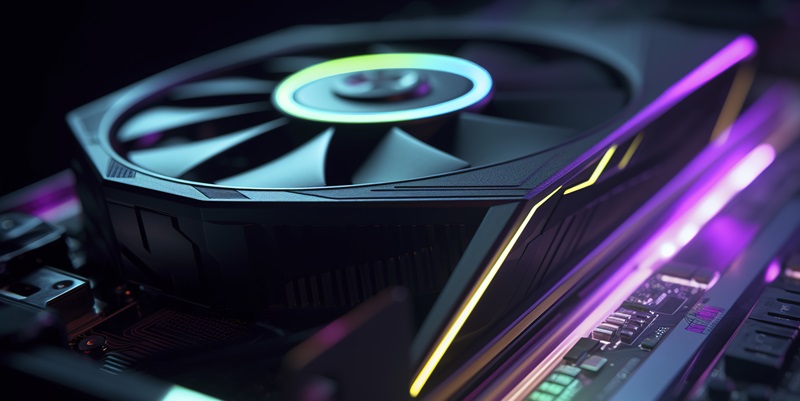Acer, a recent entrant in the DIY space, has showcased its engineering expertise with the release of the Predator BiFrost series. One standout feature of this series is the combination of axial and blower fans on the same card. Acer has now started shipping cards within its latest Predator Orion X PCs, and the first review unit of this high-end system has been acquired by KitGuru. The GPU housed within it, the Acer GeForce RTX 4090, has sparked intrigue.
Design of the Acer GeForce RTX 4090
The Acer GeForce RTX 4090 is an impressive triple-slot monster, nearly as large as the RTX 4090 Founders Edition. Its size makes it a visually imposing graphics card, commanding attention within a system build. Acer has clearly prioritized cooling with this design, evident from the unique approach taken to address thermal management.
The Cooler: Innovative Features
The cooler of the Acer GeForce RTX 4090 incorporates a copper block attached directly to a water pump and radiator. This built-in liquid cooling solution aims to optimize heat dissipation and maintain lower temperatures during intensive tasks. The integration of liquid cooling represents Acer’s commitment to pushing the boundaries of GPU cooling technology.
Disappointing Test Results
Intrigued by the capabilities of the Acer GeForce RTX 4090, KitGuru proceeded to test the card’s clocks, thermals, and acoustics. Unfortunately, the results were underwhelming. Despite the innovative cooling design, the Acer GeForce RTX 4090 fell short in several aspects.
Clocks and Boost Performance
The ACER GeForce RTX 4090 Predator shipped with reference clocks of 2235 MHz base and 2520 MHz boost. However, during testing, it reached a peak boost clock of just 2644 MHz. This performance was 36 MHz slower than the slowest RTX 4090 it succeeded and over 100 MHz slower than similar liquid-cooled solutions available in the market. These results raise concerns about the card’s overall performance potential.
Thermal Performance: GPU and Memory Temperatures
Thermal management is a critical aspect of any high-performance GPU. Unfortunately, the ACER GeForce RTX 4090 Predator proved to be the hottest during testing, with the RTX 4090 Founders Edition coming in second place but with a 4.4°C lower temperature on the GPU. This discrepancy raises questions about the efficiency of the cooling system utilized in the ACER GeForce RTX 4090.
Even more concerning were the memory (GDDR6X) temperatures, which exceeded 90°C and climbed up to 96°C. This 12°C difference compared to the Founders Edition model is alarming, as high memory temperatures can impact overall performance and stability.
As Acer’s first liquid-cooled hybrid solution, it is evident that more tuning and refinement are required to make the Acer GeForce RTX 4090 a viable option for future releases. The disappointing thermals, clock speeds, and memory temperatures all highlight areas that need improvement. Acer should prioritize addressing these issues to meet the expectations of the PC gaming community.
The ACER GeForce RTX 4090 with built-in liquid cooling showcases the company’s innovative approach to GPU design. However, while the concept is promising, the execution falls short in terms of thermal management and performance. ACER needs to invest in further optimization and refinement to fully capitalize on the potential of this card. Despite the initial setbacks, it is encouraging to see ACER’s commitment to pushing boundaries, and we eagerly await future iterations that address the shortcomings of the current release.

